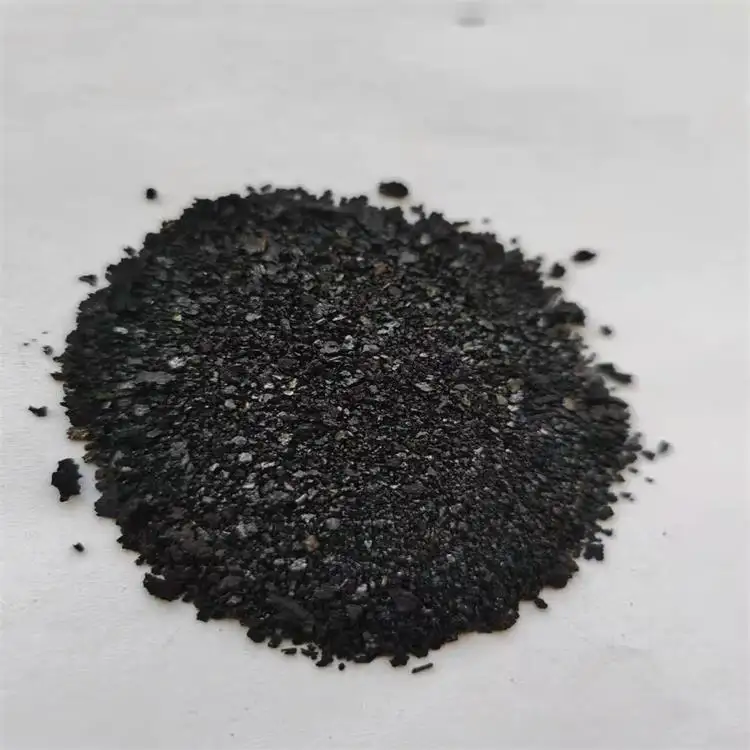Exploring the Applications and Benefits of Sulphur Black Products in Industry
The Importance of Sulphur Black Products in Modern Industries
In the world of industrial chemicals and dyes, sulphur black products stand out for their essential role in various applications, particularly in the textile and leather industries. As one of the most widely used black dyes, sulphur black has gained prominence due to its exceptional properties, cost-effectiveness, and versatility. This article delves into the composition, applications, manufacturing processes, and environmental considerations associated with sulphur black products.
Composition and Properties
Sulphur black refers to a group of black dyes made from products derived from the sulphur compounds. The dye is typically produced by reducing sulphur compounds, resulting in a black, powdery substance. One of the principal forms is sulphur black 1, which is favored for its strong adherence to fibres and its ability to produce deep, rich shades of black. The dye's ability to withstand washing, light, and other environmental factors makes it particularly desirable for commercial applications.
The unique chemical composition of sulphur black allows it to form strong bonds with cellulose fibres, such as cotton, as well as synthetic materials. This capability not only ensures lasting colour but also enhances the fabric's overall durability. Additionally, sulphur black is often chosen for its affordability, making it an appealing option for large-scale production where cost considerations are paramount.
Applications
Sulphur black products are predominantly used in the textile industry, especially in dyeing cotton fabrics, denim, and other textiles. The textile market appreciates sulphur black for its ability to produce consistent, vibrant shades, all while maintaining wash fastness and resistance to fading. Denim manufacturers, for example, often rely on sulphur black dyes to achieve the characteristic deep blue-black hues that are synonymous with high-quality jeans.
Aside from textiles, sulphur black also finds extensive use in the leather industry. The dye’s adherence and fastness properties make it ideal for colouring leather goods, from footwear to handbags. Furthermore, sulphur black is used in the production of inks, paints, and coatings, where the need for strong pigmentation and durability are critical.
Manufacturing Processes
sulphur black products

The manufacturing of sulphur black products involves several stages, beginning with the sulfurization of organic compounds. Successful production relies on the precise control of chemical reactions to ensure the resulting dye retains its desired characteristics. Generally, the process involves
1. Sulphurization Organic materials are treated with sulphur at high temperatures, resulting in intermediate products. 2. Reduction These intermediates undergo a reduction process, which converts them into a soluble form suitable for dyeing applications. 3. Neutralization and Precipitation Once reduced, the product is neutralized and then precipitated to obtain the final sulphur black dye powder. 4. Drying and Milling The final step involves drying the dye and milling it to a fine powder, ready for packaging.
A critical aspect of sulphur black production is ensuring that the processes adhere to environmental regulations. Manufacturers are increasingly adopting eco-friendly technologies and practices to minimize the impact on the environment, focusing on waste reduction and energy efficiency.
Environmental Considerations
While sulphur black dyes offer substantial benefits, their environmental impact cannot be overlooked. The sulphur compounds involved in the dyeing process can lead to issues such as water pollution if not managed properly. Consequently, awareness of sustainability has driven improvements in the manufacturing processes, leading to innovations that seek to lessen waste and promote recycling within the industry.
Many manufacturers are now exploring closed-loop systems and advanced waste-treatment technologies to mitigate the environmental footprint associated with sulphur black production. Moreover, the rise of eco-conscious consumers urges industries to evolve and seek greener alternatives, further advancing the conversation around sustainable dyeing practices.
Conclusion
Sulphur black products play a pivotal role in a variety of industries, particularly textiles and leather, due to their remarkable dyeing properties and cost efficiency. As manufacturing processes evolve and environmental concerns gain prominence, the industry collectively strives toward sustainable practices. By focusing on innovation and responsible production, sulphur black products can continue to satisfy the needs of modern industries while minimizing their impact on the planet. As research progresses, we may also see further advancements that enhance the quality and sustainability of these essential products, solidifying their place in the future of dyeing and textiles.
-
The Timeless Art of Denim Indigo Dye
NewsJul.01,2025
-
The Rise of Sulfur Dyed Denim
NewsJul.01,2025
-
The Rich Revival of the Best Indigo Dye
NewsJul.01,2025
-
The Enduring Strength of Sulphur Black
NewsJul.01,2025
-
The Ancient Art of Chinese Indigo Dye
NewsJul.01,2025
-
Industry Power of Indigo
NewsJul.01,2025
-
Black Sulfur is Leading the Next Wave
NewsJul.01,2025

Sulphur Black
1.Name: sulphur black; Sulfur Black; Sulphur Black 1;
2.Structure formula:
3.Molecule formula: C6H4N2O5
4.CAS No.: 1326-82-5
5.HS code: 32041911
6.Product specification:Appearance:black phosphorus flakes; black liquid

Bromo Indigo; Vat Bromo-Indigo; C.I.Vat Blue 5
1.Name: Bromo indigo; Vat bromo-indigo; C.I.Vat blue 5;
2.Structure formula:
3.Molecule formula: C16H6Br4N2O2
4.CAS No.: 2475-31-2
5.HS code: 3204151000 6.Major usage and instruction: Be mainly used to dye cotton fabrics.

Indigo Blue Vat Blue
1.Name: indigo blue,vat blue 1,
2.Structure formula:
3.Molecule formula: C16H10N2O2
4.. CAS No.: 482-89-3
5.Molecule weight: 262.62
6.HS code: 3204151000
7.Major usage and instruction: Be mainly used to dye cotton fabrics.

